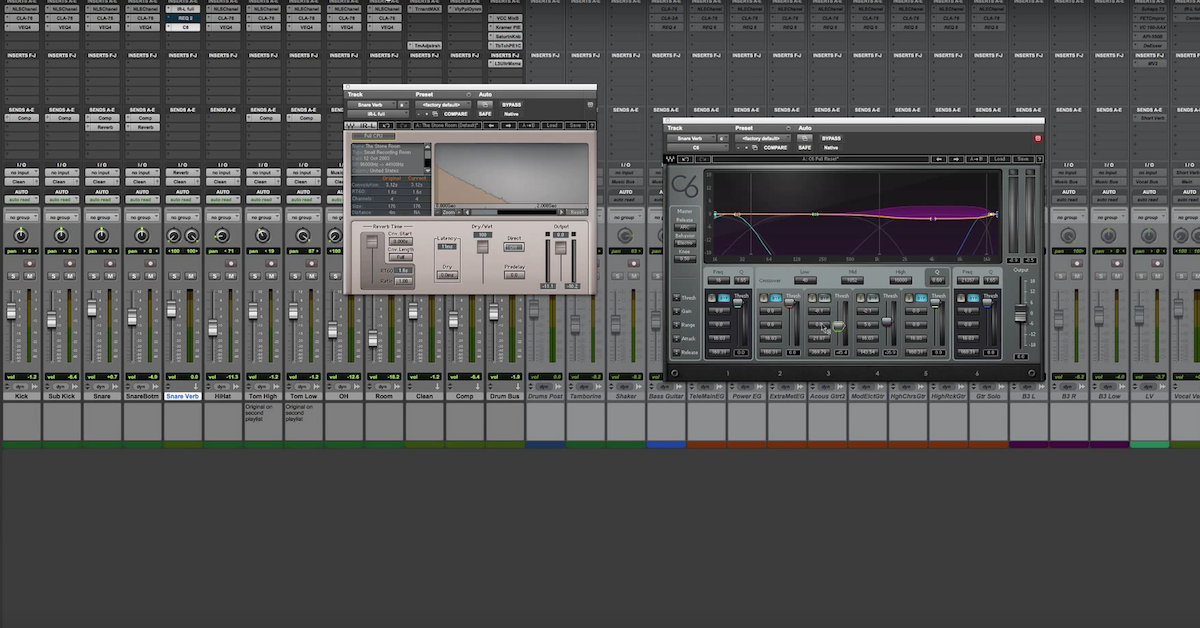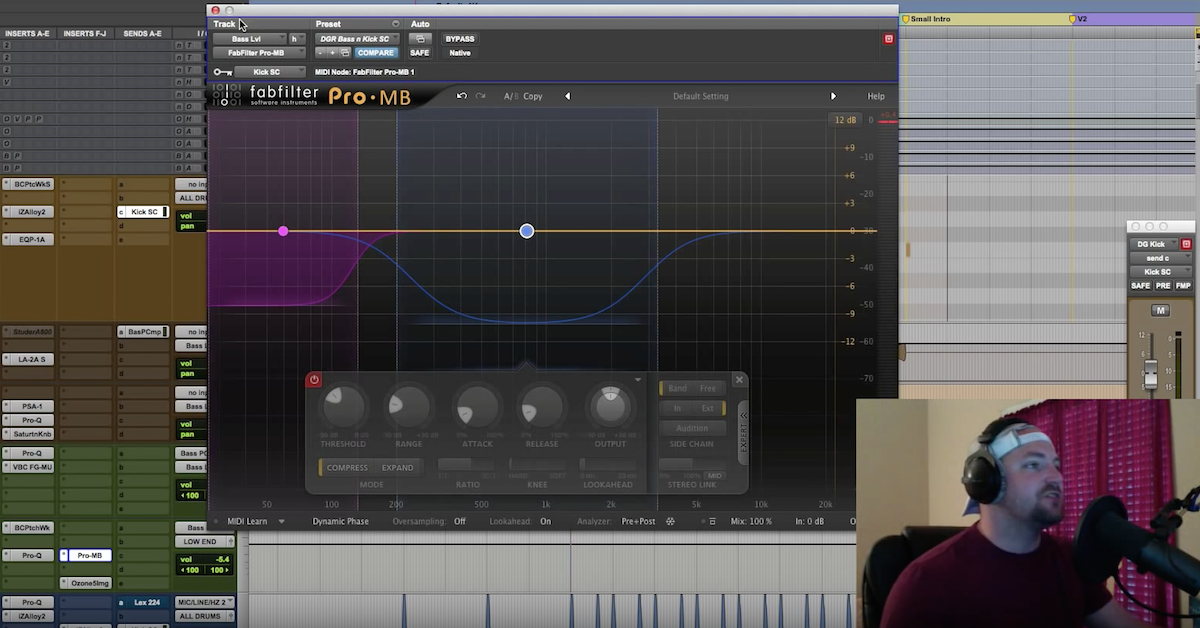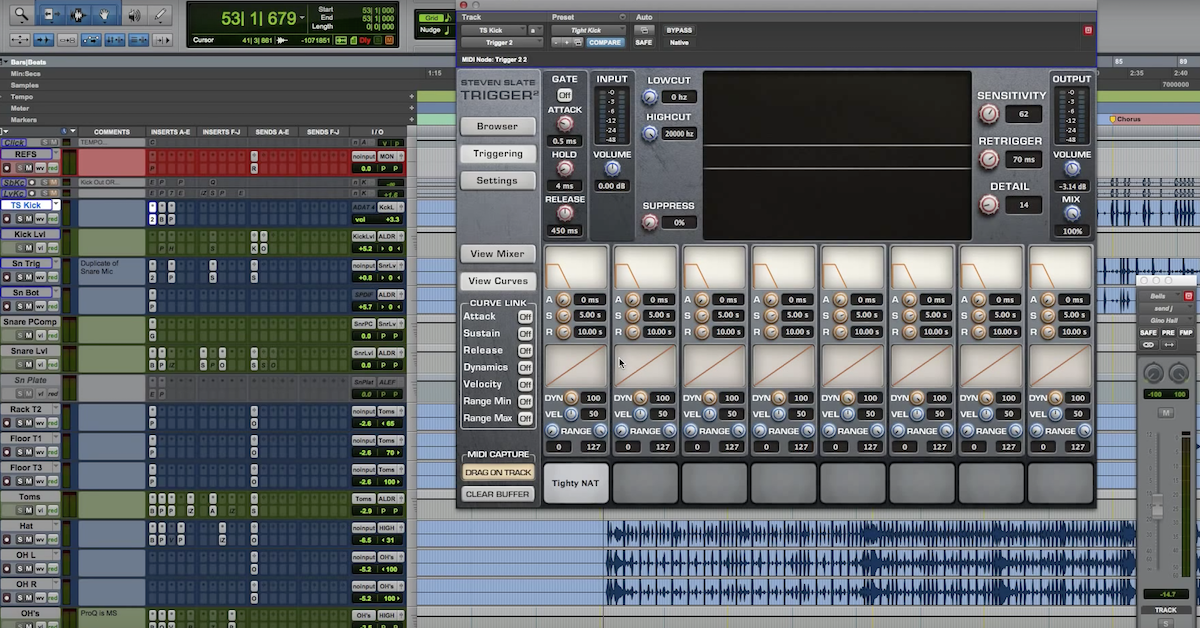Tips for Mixing with Multiband Expansion
[music]
I’m gonna do two things here with upwards expansion. The first is I’m gonna bring out the punch of my kick drum. I’m gonna use this lower floating band that I’ve got going on here. I’m also gonna bring out the acoustic guitar and sparkle on the track by using this other floating band that I’ve got going on up here.
What I’ll start out by doing is soloing the lowest band down here, and focusing on a way to do upwards expansion here. And narrow the Q so I can just focus on the kick drum.
[music]
And have a faster release and a faster attack there we go. It’s starting to pump a little bit. And I’ll bypass it and you can hear what it’s adding. Kick drum kind of falls flat. And it’s really fattening up here with the upward expansion. What I demonstrated right now — I’ve kind of over-exaggerated the effect with the range and gain. I’d probably back it off just a little bit. Bring the range down a little bit and bring the threshold up so it won’t be as dramatic, but I want you to be able to hear exactly what’s going on so when you’re doing this kind of effect, you know what to listen for.
Next let me get on to doing a similar sort of thing with the acoustic guitars up here. Solo this band.
[music]
Nice sparkle probably around this range between the upper two channel. Very fast attack and release. This one is easier to play around with, you’ve got the whole thing coming in you can hear how it sounds.
[music]
Hopefully you’re able to hear the effects I’m adding in. Adding in that extra punch and that fatness to the kick drum. I’m also adding in that extra little sparkle on the top end by using the upwards expansion. Again this is what makes multiband processing very unique and very special and very useful, is because you can have things like compression and expansion going on at the same time across difference frequency ranges and really focus in on the sound there. As with everything, experiment as much as possible, try out different things. What works on one song might not work on a different song. Try out the presets, it might give you an idea about conventional settings for the attack and release, and then the main thing is just to kind of get used to balancing the threshold along with the range until you find something that works typically for the songs that you’re mixing. I’ll just go ahead and play out the track so you can again have an idea about how it sounds.






